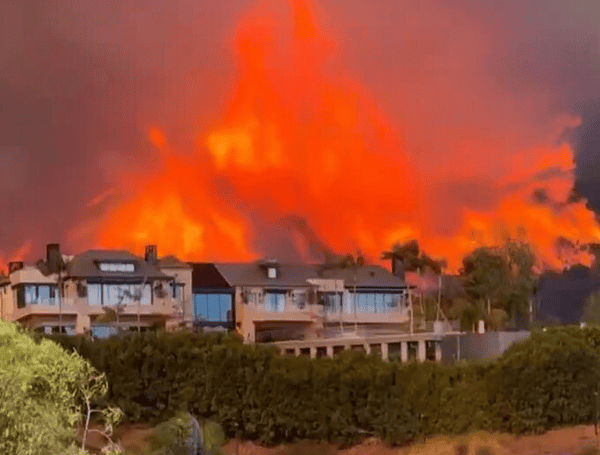As wildfires continue to ravage Southern California, more than 900 incarcerated firefighters have joined the battle, performing critical tasks to slow the spread of flames. The California Department of Corrections and Rehabilitation (CDCR) has emphasized the importance of these crews, calling them an “essential” part of the state’s response.
CDCR Secretary Jeff Macomber praised the efforts of incarcerated workers, “Their commitment to protecting lives and property during these emergencies cannot be overstated.”
These crews primarily engage in manual labor, such as clearing vegetation and creating firebreaks, while professional firefighters handle tasks like operating fire hoses and dispersing flame retardant. Crews often work grueling 24-hour shifts under dangerous conditions.
READ: California Dems Paved The Way For Los Angeles To Be Consumed By ‘The Big One’
California has relied on incarcerated firefighters since 1915, with the program expanding significantly during World War II. Today, the state operates 35 fire camps, where eligible incarcerated individuals volunteer to fight fires and respond to other emergencies. Participants must meet physical and behavioral requirements and have eight years or less remaining on their sentence.
For many, firefighting is one of the most sought-after prison jobs. Beyond the pay—$5.80 to $10.24 per day, with an additional $1 per hour during emergencies—participants often find the work rewarding. Former firefighter David Desmond reflected on his experience, saying, “When we left, people would hold up thank-you signs. No one treated us like inmates; we were firefighters.”
READ: Pennsylvania Climate Scientist Must “Pay Up” $530K After 8 Year Legal Battle Over 2 Blog Posts
Despite its perceived benefits, the program has faced criticism. Bianca Tylek, executive director of Worth Rises, called the system exploitative. “The decision to take part is largely made under duress, given the alternative,” she said, referencing the conditions of incarceration. Critics also highlight the risks: a 2022 Time analysis found that incarcerated firefighters face higher rates of injuries, including smoke inhalation and cuts, compared to their professional counterparts.
Many incarcerated firefighters hope to pursue the profession after their release. However, securing a job with a criminal record remains difficult. Legislation passed in 2020 aims to help former fire crew members expunge their records and obtain firefighting certifications, but the process can still be cumbersome.
Anthony Pedro, who served as an incarcerated firefighter before his release in 2018, faced significant hurdles. After months of homelessness, he secured a job as a professional firefighter and later founded the Future Fire Academy to train and certify formerly incarcerated individuals. “It’s so rewarding to be able to help people on their worst days,” Pedro said.
READ: Los Angeles Fire Chief Details How ‘Devastating’ Cuts Led To ‘Horrific’ Wildfire
While participants often express pride in their work, the program raises ethical concerns. Equipment provided to incarcerated crews is frequently outdated, and some firefighters fear repercussions if they refuse assignments. Amika Mota, a former firefighter and now executive director of the Sister Warriors Freedom Coalition, recalled working with faulty gear and limited resources during her time in the program.
“Every firefighter out there is proud to be there,” Mota said. “But they’ve signed away their rights to compensation if they die on the fireground. They’re on the frontlines without fully understanding the long-term health impacts.”
Incarcerated firefighters have historically made up as much as 30% of California’s wildfire response force. However, sentencing reforms have reduced the state’s prison population, leading to staffing shortages. Some officials have expressed concerns about the state’s ability to contain fires without the program, which provides a cost-effective solution amid budget deficits.
Please make a small donation to the Tampa Free Press to help sustain independent journalism. Your contribution enables us to continue delivering high-quality, local, and national news coverage.
Connect with us: Follow the Tampa Free Press on Facebook and Twitter for breaking news and updates.
Sign up: Subscribe to our free newsletter for a curated selection of top stories delivered straight to your inbox.


